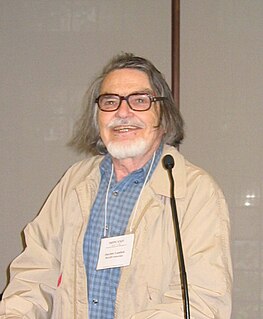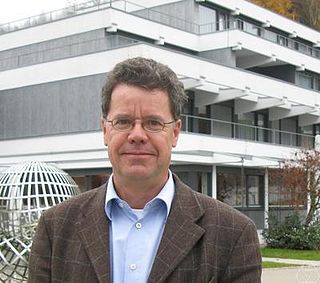Categorical set theory is any one of several versions of set theory developed from or treated in the context of mathematical category theory.
Categorical set theory is any one of several versions of set theory developed from or treated in the context of mathematical category theory.

Category theory formalizes mathematical structure and its concepts in terms of a labeled directed graph called a category, whose nodes are called objects, and whose labelled directed edges are called arrows. A category has two basic properties: the ability to compose the arrows associatively, and the existence of an identity arrow for each object. The language of category theory has been used to formalize concepts of other high-level abstractions such as sets, rings, and groups. Informally, category theory is a general theory of functions.
Mathematical logic, also called formal logic, is a subfield of mathematics exploring the applications of formal logic to mathematics. It bears close connections to metamathematics, the foundations of mathematics, philosophy, and theoretical computer science. The unifying themes in mathematical logic include the study of the expressive power of formal systems and the deductive power of formal proof systems.
The philosophy of mathematics is the branch of philosophy that studies the assumptions, foundations, and implications of mathematics. It aims to understand the nature and methods of mathematics, and find out the place of mathematics in people's lives. The logical and structural nature of mathematics itself makes this study both broad and unique among its philosophical counterparts.

In mathematics, a category is a collection of "objects" that are linked by "arrows". A category has two basic properties: the ability to compose the arrows associatively and the existence of an identity arrow for each object. A simple example is the category of sets, whose objects are sets and whose arrows are functions.

Steven J. Brams is an American game theorist and political scientist at the New York University Department of Politics. Brams is best known for using the techniques of game theory, public choice theory, and social choice theory to analyze voting systems and fair division. He is one of the independent discoverers of approval voting, as well as extensions of approval voting to multiple-winner elections to give proportional representation of different interests.

Saunders Mac Lane was an American mathematician who co-founded category theory with Samuel Eilenberg.
In mathematical logic, the Löwenheim–Skolem theorem is a theorem on the existence and cardinality of models, named after Leopold Löwenheim and Thoralf Skolem.
In category theory, a subobject classifier is a special object Ω of a category such that, intuitively, the subobjects of any object X in the category correspond to the morphisms from X to Ω. In typical examples, that morphism assigns "true" to the elements of the subobject and "false" to the other elements of X. Therefore, a subobject classifier is also known as a "truth value object" and the concept is widely used in the categorical description of logic. Note however that subobject classifiers are often much more complicated than the simple binary logic truth values {true, false}.
In programming language theory, semantics is the field concerned with the rigorous mathematical study of the meaning of programming languages. It does so by evaluating the meaning of syntactically valid strings defined by a specific programming language, showing the computation involved. In such a case that the evaluation would be of syntactically invalid strings, the result would be non-computation. Semantics describes the processes a computer follows when executing a program in that specific language. This can be shown by describing the relationship between the input and output of a program, or an explanation of how the program will be executed on a certain platform, hence creating a model of computation.

Francis William Lawvere is a mathematician known for his work in category theory, topos theory and the philosophy of mathematics.
Categorical logic is the branch of mathematics in which tools and concepts from category theory are applied to the study of mathematical logic. It is also notable for its connections to theoretical computer science. In broad terms, categorical logic represents both syntax and semantics by a category, and an interpretation by a functor. The categorical framework provides a rich conceptual background for logical and type-theoretic constructions. The subject has been recognisable in these terms since around 1970.
In mathematics, a pointed set is an ordered pair where is a set and is an element of called the base point, also spelled basepoint.

Joachim "Jim" Lambek was Peter Redpath Emeritus Professor of Pure Mathematics at McGill University, where he earned his Ph.D. degree in 1950 with Hans Zassenhaus as advisor.
A Boolean-valued function is a function of the type f : X → B, where X is an arbitrary set and where B is a Boolean domain, i.e. a generic two-element set,, whose elements are interpreted as logical values, for example, 0 = false and 1 = true, i.e., a single bit of information.
In mathematics, especially (higher) category theory, higher-dimensional algebra is the study of categorified structures. It has applications in nonabelian algebraic topology, and generalizes abstract algebra.
In mathematics, a topos is a category that behaves like the category of sheaves of sets on a topological space. Topoi behave much like the category of sets and possess a notion of localization; they are a direct generalization of point-set topology. The Grothendieck topoi find applications in algebraic geometry; the more general elementary topoi are used in logic.

Izak (Ieke) Moerdijk is a Dutch mathematician, currently working at Utrecht University, who in 2012 won the Spinoza prize.
In mathematical logic, an omega-categorical theory is a theory that has exactly one countably infinite model up to isomorphism. Omega-categoricity is the special case κ = = ω of κ-categoricity, and omega-categorical theories are also referred to as ω-categorical. The notion is most important for countable first-order theories.
Categorical quantum mechanics is the study of quantum foundations and quantum information using paradigms from mathematics and computer science, notably monoidal category theory. The primitive objects of study are physical processes, and the different ways that these can be composed. It was pioneered in 2004 by Samson Abramsky and Bob Coecke.
In mathematics, a Lawvere–Tierney topology is an analog of a Grothendieck topology for an arbitrary topos, used to construct a topos of sheaves. A Lawvere–Tierney topology is also sometimes also called a local operator or coverage or topology or geometric modality. They were introduced by William Lawvere (1971) and Myles Tierney.